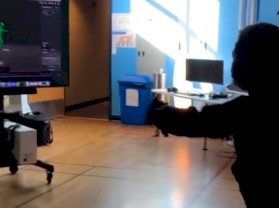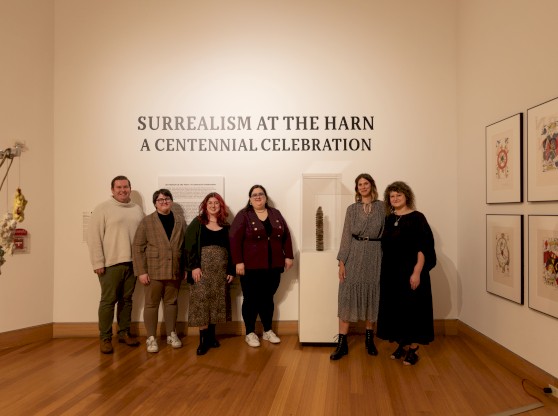The engineering students of 207 Weil Hall remained quiet during their guest lecture the morning of July 11.
But after Creative B public artist Nobuho “Nobi” Nagasawa gave her presentation on her engineered artwork, hands shot into the air with questions.
Nagasawa, an interdisciplinary artist from Japan, creates artwork that explores the interactions with nature and its environment. Her guest lecture workshop was given to Philip Jackson’s engineering class July 11 at 11 a.m. to kick-start a collaboration project between the arts and sciences.
“It’s about collaboration of working with different people in a different field,” Nagasawa said. “I just wanted to bring interest from different perspectives so people who are interested in the field of engineering can maybe. . . come up with an idea that, ‘Oh working with an artist could be a fun thing.’”
She focused the presentation on her different works of art, including her Creative B art projects “Water Landings” and “Sun Catcher.”
The large “Water Landings” dragonfly sculptures can be seen outside the University Gallery facing 13th Street, and the LED “Sun Catcher” reeds will light the roof of the building once installed.
Many of the other projects she highlighted in the lecture were artworks that incorporated fiber optics.
One of the works, “Bio Lux,” is a first prototype of luminescent optical fiber attire. Nagasawa showed a video of pianist Jocelyn Ho wearing the dress-like attire to demonstrate how the fiber optics change color in response to heartbeat, breathing, perspiration and movements.
Nagasawa’s lecture was meant to inspire a follow-up project in collaboration between Jackson’s freshman engineering class and School of Art and Art History alumus and faculty member Charlie Cummings’s Workshop for Art Research and Practice (WARP) class.
Teams from the two classes will work together to create a wind-activated turbine or device, Nagasawa said.
From the arts perspective, students will be challenged to find where the art is, Cummings said, whether that is the machine, the drawings, the documentation of the project or a performance. It will be a technical exercise that they have to discover their own concept, he said.
“In some ways this is going to be the most challenging because I don’t have the answers,” Cummings said. “It will depend on what they do.”
The most rewarding part of the workshop for Nagasawa was speaking to a student who asked if she would consider using her fiber optics to work with disabled children.
She said that she is interested in exploring the use of her fiber optics in a biomedical field. Young children or elderly people that have difficulty communicating could one day wear a fiber optic belt or wristband that reflects their heartbeat or body temperature, Nagasawa said.
“I think there’s a great potential for artists and engineers to collaborate,” she said. “I think there’s not much different between the fields of art and engineering.”




